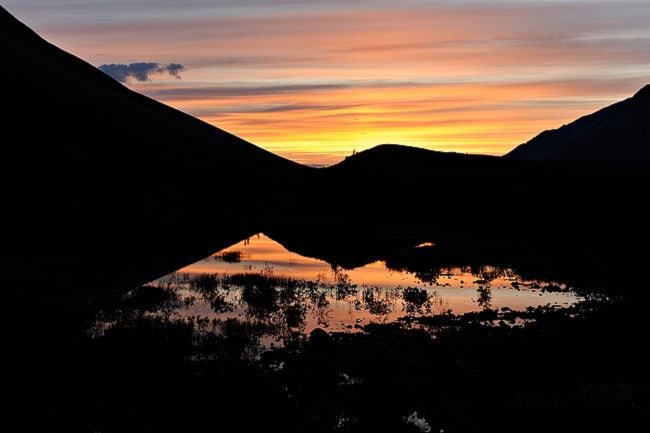While the Peel Watershed is off the table, aboriginal people are not against mining, say two chiefs championing the region.
They hope their efforts at compromise will be matched by industry.
In releases last week, the Tr’ondek Hwech’in and Na-cho Nyak Dun First Nations endorsed the “mining engagement guide” they co-authored with the Yukon Chamber of Mines and released last week.
The document should shape how mining companies look at projects in their traditional territory, and demonstrates the First Nations’ willingness to work with the industry, they said.
“We co-operated on this engagement guide in the same spirit that we are willing to compromise and accept the Final Recommended Peel Land Use Plan,” said Na-cho Nyak Dun First Nation Chief Simon Mervyn.
“The Chamber of Mines partnered effectively with us on this, and we ask them to do the same in the Peel by agreeing to the compromise plan.”
But it is not up to the chamber, said its president Claire Derome.
It is the territorial government that has yet to lay out its position on the plan.
The chamber is still reviewing the report and wants to see how the parties (the First Nations and territory) engage with industry once they have decided, said Derome.
But while everyone waits for the territory’s response, the 22-page guide could ward off controversies, like the Peel, in the future.
It encourages mining companies to engage aboriginal groups earlier.
The guide lays out a checklist for companies looking to work in the Yukon, suggesting they fulfill obligations under the final agreements and use local knowledge, suppliers and expertise when available.
While mentioning the inherent rights and authorities of the three unsigned First Nations, the guide explains Yukon First Nations are self-governing and should be treated the same as a territorial government, not as simple stakeholders.
“We will work co-operatively with anyone who comes to our territory intending to act responsibly and to respect our culture and way of life,” said Mervyn. “This guide gives those companies a clear heads up on when and how to engage with us.”
It started out as an updated list of contacts and information, said Derome.
“About a year ago, we were approached by both First Nations to initiate some discussion on how we could improve communication and relationships between our industry and First Nation governments.”
The guide is actually about 120 years too late, said Chief Eddie Taylor, of the Tr’ondek Hwech’in First Nation, in a release Thursday.
“To date, there have been no guidelines in place pertaining to First Nation concerns, but these guidelines are better late than never,” he said. “This is only the beginning of an evolving mining guide. It supplies real strategies and guidelines for navigating our regulatory regimes, connecting with our First Nations communities and ensuring a project’s success.”
The guide lays out how the Yukon’s long history with boom-and-bust economies make residents skeptical about a project’s lifespan.
It also warns about the effect residential schools had on communities, and urges them to be respectful of cultural activities, like hunting and fishing season, potlatches and general assemblies.
“We tried to provide basic guidance with the hope that this will help generate earlier contact than is currently happening,” said Derome. “And I think it’s happening because it’s a lack of understanding of who they need to talk to, how and when. So that’s what this guide is trying to address.”
But it should not be interpreted as a change of position on the Peel plan, said both Mervyn and Taylor.
“This guide is in no way related to our position on the protection of the Peel Watershed,” said Taylor. “As we have stated, the Peel Watershed is an area where no mining should take place. Outside the Peel, we have a good working relationship with proponents of responsible mining, especially the ones in our traditional territory who directly engage us.”
“Responsible mining companies wouldn’t go against our wishes in the Peel Watershed,” said Mervyn. “We don’t see the Peel as part of the working landscape.”
Currently, a Quick Reference Guide to Effective and Respectful Engagement Practices with Yukon First Nations and Communities is available at the chamber’s website, in PDF format, with hard copies expected soon.
The chamber expects it will be widely distributed through the efforts of its extensive regional and national contacts and 400-plus members, said Derome.
Contact Roxanne Stasyszyn at roxannes@yukon-news.com
